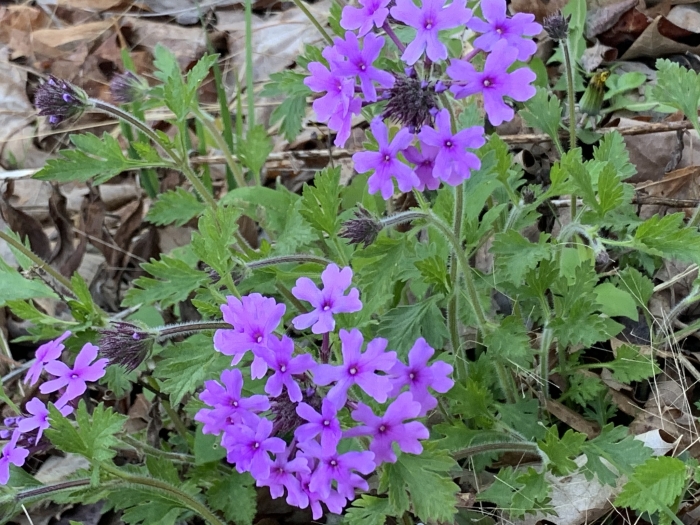Rose Mock Vervain
(Glandularia canadensis)
Rose Mock Vervain (Glandularia canadensis)
/
/

Cazody
Public Domain

















































Estimated Native Range
Summary
Rose Mock Vervain is valued for its extended flowering period and its ability to attract pollinators such as butterflies. It is often used in butterfly gardens, as ground cover, or in borders due to its low maintenance and drought tolerance once established. For optimal growth, it prefers full sun exposure and well-drained soils. While it tolerates low water conditions, moderate watering will encourage more vigorous growth and flowering. This species is generally disease-resistant but can be susceptible to root rot in poorly drained soils. It is not known to be invasive and does not have aggressive roots, making it a safe choice for various garden settings.CC BY-SA 4.0
Plant Description
- Plant Type: Herb
- Height: 0.5-1.5 feet
- Width: 1-2 feet
- Growth Rate: Moderate
- Flower Color: Pink, Purple
- Flowering Season: Spring, Summer
- Leaf Retention: Deciduous
Growth Requirements
- Sun: Full Sun
- Water: Low, Medium
- Drainage: Fast
Common Uses
Bank Stabilization, Bee Garden, Bird Garden, Border Plant, Butterfly Garden, Deer Resistant, Drought Tolerant, Fragrant, Groundcover, Hummingbird Garden, Low Maintenance, Potted Plant, Rabbit Resistant, Rock Garden, Salt Tolerant, Showy Flowers, Street Planting
Natural Habitat
Native to prairies, open woodlands, and roadsides in the South Central and Southeastern USA
Other Names
Common Names: Rose Verbena , Clump Verbena , Rose Vervain
Scientific Names: Verbena canadensis , Glandularia canadensis , Verbena aubletia , Verbena aubletii , Verbena elegans , Verbena drummondii , Verbena longiflora , Verbena lambertii , Buchnera canadensis , Glandularia canadensis f. candissima
GBIF Accepted Name: Glandularia canadensis (L.) Small